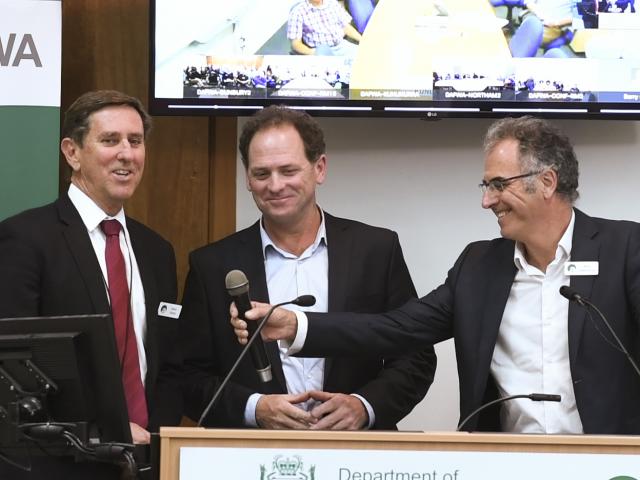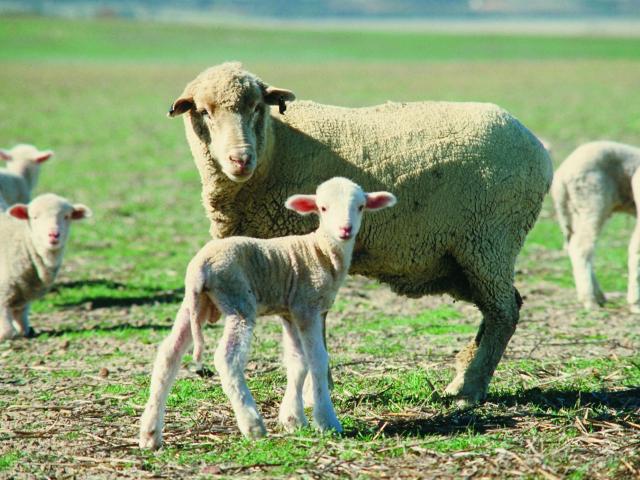Bigger department benefits agriculture
Western Australia’s agriculture and food sector is set to benefit from the State Government’s decision to amalgamate key agencies working to support our primary industries and regions.
On 1 July, the departments of Agriculture and Food; Fisheries; and Regional Development joined with the staff of the nine Regional Development Commissions to form the new Department of Primary Industries and Regional Development (DPIRD).
These major structural changes are happening across the public sector to create more collaborative departments focused on whole-of-government objectives to deliver services in a more efficient and effective way.
Ralph Addis has taken on the role of acting Director General of DPIRD to help build an organisation to be proud of, and achieve more together than as individual agencies.
Ralph was the Director General of the Department of Regional Development.
He hails from a family farm near Cranbrook and has a first-hand appreciation of the challenges of modern agribusinesses.
The Department of Agriculture and Food, Western Australia's (DAFWA's) former acting Director General Mark Webb has moved on to lead the new Department of Biodiversity, Conservation and Attractions.
Mark made a major contribution to the department and the sector over the past 14 months.
While the new combined department officially started operating on 1 July, with all staff brought under the one banner, the full transition of functions and services will take some time longer.
A project management team, including representatives from DAFWA, has been established to guide this transition.
Mark Sweetingham has been appointed as DPIRD’s Deputy Director General for Agriculture and will help navigate this latest evolution of the department.
Given Mark's previous role as Executive Director of Grains Research and Development Transformation, he is well aware of the pressures and opportunities facing the WA agriculture and food sector and is committed to ensuring we are well equipped to take our sector forward.
Mark has expressed his excitement about the future of agriculture and the synergies and opportunities to be generated by working together in a bigger more collaborative department.
During this transition process it is ‘business as usual’ for the agriculture and food staff, who continue to work with the expertise and passion for which they are renowned.
Our valued partnerships remain strong and our research and development activities will stay on track with universities, grower groups and organisations, such as the Grains Research and Development Corporation.
DAFWA has had many incarnations over the past 124 years, to enable it to support the continued development of agriculture and food in Western Australia to the sophisticated, modern agribusinesses that we have today.
This is yet another chapter in that proud history, which will enable us to tap into the skills and resources of other aligned departments and pursue significant activities that advance the capability and prosperity of the sector.
We invite all stakeholders to join us along this journey and to keep the lines of communication open so we can build an innovative, relevant and robust department that will meet the needs of the agriculture and food sector for generations to come.
For more information visit the department amalgamation webpage on our website.
Department helps agricultural businesses to navigate 2017 season
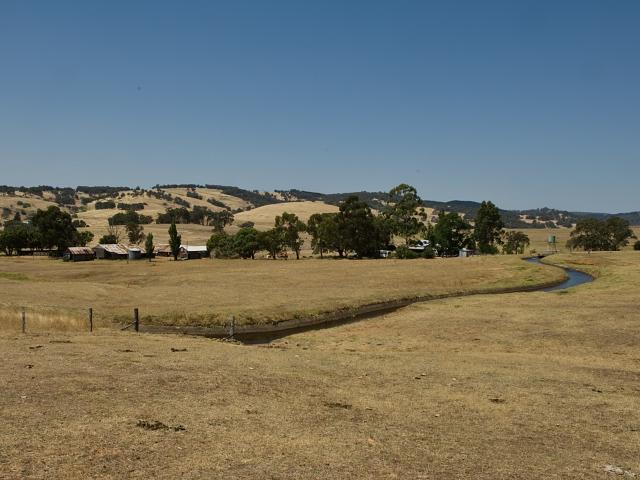
Department of Primary Industries and Regional Development (DPIRD) officers throughout the grainbelt and adjacent areas are working to support agricultural businesses affected by below average rainfall.
While good levels of stored summer soil moisture has been topped up by autumn rains on the south coast and parts of the Great Southern, areas in the northern and north-eastern agricultural area and the lower Great Southern are experiencing well below average rainfall.
The image below shows total WA rainfall from 1 April to 2 July 2017.
The department’s Statistical Seasonal Forecasting (SSF) system's June seasonal outlook predicts below average rainfall for the majority of the South West Land Division for winter and spring.
The SSF indicates a 0-40% chance of exceeding median rainfall from June to August for the majority of the grainbelt, in the decile 2-3 range, based on a poor to good predictive skill, with the exception of Ravensthorpe and the western part of the Esperance Shire, which has a higher chance of 40-60% of exceeding average rainfall, in the likely 4-7 decile range.
The longer term outlook for June to October is also for a 0-40% chance of exceeding median rainfall, in the 2-3 decile range, across the majority of the South West Land Division, based on a 50-75% consistent predictive skill.
Department officers from across the grainbelt are liaising with local grower groups, consultants and farming organisations to ensure agribusinesses receive the support they require.
A Season 2017 webpage is available on the department’s website that harnesses a vast range of information to assist landholders to navigate the season ahead.
It includes useful information on crop agronomy, livestock management, farm budgeting and health and financial information.
Climate and weather tools
The department’s website has several climate and weather tools to assist decision making, including:
- Weather stations - real time data form more than 170 weather stations around the State, including weather summaries, charts and Doppler radar rainfall and wind images
- Seasonal climate information - including rainfall forecasts, plant available soil moisture maps, potential yield calculator and frost risk maps
- Rainfall to date tool - graphs tailored to location
- Soil water tool – graphs showing soil water accumulation
- Potential yield tool - calculates potential wheat yield to location
- Extreme weather events tool – maps real time information about frost and heat events.
Cropping
The below average rainfall conditions have already had an impact on cropping programs and many grain growers are modifying their plans to optimise crop potential.
The department has undertaken modelling to identify likely impact from delayed emergence of wheat and canola crops so growers can evaluate whether other options need to be considered for these paddocks.
There has also been research on the value of reseeding canola crops.
In addition, work has been done on breakeven yields for wheat and canola.
Livestock
The department has been monitoring the situation to assist livestock producers to make informed decisions about feed budgeting, stocking rates and opportunities to capitalise on solid market conditions.
Livestock feeding has been a priority, with Pastures from Space observations showing low amounts of food on offer, across much of the grainbelt.
Many livestock producers have already commenced supplementary feeding and feed budgeting will be essential if dry conditions persist in coming months.
The department has a number of tools and calculators to assist sheep grazing management.
Department officers report livestock across the regions are currently in good condition.
Support Services
It seems likely that 2017 will be a variable season for much of the grainbelt.
Good communication and social support will be essential to help each other through the months ahead.
Services are available to assist people through this difficult period:
- WA rural health, financial and information support directory
- Rural Financial Counselling Service WA or freecall 1800 612 044 - free financial counselling services to assist primary producers
- Regional Men’s Health Initiative or call (08) 96902277
- Farm Household Allowance or call 13 23 16 – a household support payment from the Australian Government
- Farm Business Training or 1800 198 231 – targeted training to improve business management provided via the department.
The Season 2017 webpage will be updated with relevant, useful information as the season progresses.
Opportunities for growth in the Great Southern
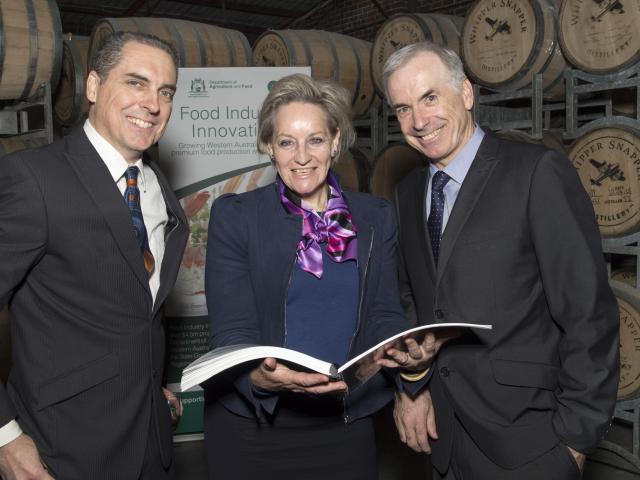
The Food Industry Innovation (FII) project’s Premium Agrifood Market Opportunity (PMO) report was launched by Minister for Agriculture and Food, The Hon Alannah MacTiernan MLC, to 70 industry stakeholders last Thursday at Whipper Snapper Distillery in East Perth.
The report identifies 20 key food and beverage opportunities targeting high-value, high-growth markets for WA’s premium food industry, narrowed down from more than 500.
Using market trend research focused on domestic and Asian markets, the report highlights export market value of up to $4 billion across the 20 priority opportunities ranging from organic beef to specialty grains, fermented foods, cider and baby food.
Western Australia has previously produced and exported bulk quantities of agrifood ingredients, but risks falling behind in the share of premium, value-added consumer-ready products it exports compared to other states and wealthy countries.
Within the report, gap assessments highlight improvement in marketing, awareness activities and sales capabilities as key focus areas for the growth of WA’s premium food and beverage businesses.
The report was completed by Coriolis Research and is part of the Department’s three-year Food Industry Innovation project, supported by Royalties for Regions.
Food Industry Innovation Project Manager Kim Antonio said the team was committed to helping grow the value of Western Australia’s premium food and beverage industry.
The project will provide identified WA premium food and beverage businesses seeking growth, with access to targeted resources, knowledge, skills, and information on domestic and international market opportunities.
The project will offer WA premium food producers a range of tools to address their business needs and gaps including business growth training and links to support services provided by other department projects and external agencies.
Upcoming event
Key findings of the report will also be promoted across regional WA and Great Southern residents are invited to attend the Albany presentation.
The event takes place on 27 July from 10am - 12pm at Wilson Brewing Company.
Topics to be presented are:
- Premium Agrifood Market Opportunity Report – Opportunities for growth in the premium food industry for the Great Southern Region (Kim Antonio, DPIRD)
- 2016 survey of food production and processing in the Great Southern – What does our region currently produce and what is our capacity (Nikki Poulish, Manager Specialised Food Centre, DPIRD).
The event will help to inform agricultural future investment in the Great Southern by assisting to match the region’s capacity for production with opportunities in domestic and export markets.
To RSVP contact Nikki Poulish on +61 (0)8 9892 8415.
A copy of the report can be downloaded from our website agric.wa.gov.au/pmoreport.
For more information email: foodindustryinnovation@agric.wa.gov.au.
Stored soil water is important in 2017
Stored soil water is likely to make a significant contribution to crop yield this year due to high summer rainfall and low rainfall in May and June.
Department of Primary Industries and Regional Development (DPIRD) Development Officers are using the SoilWaterApp (SWApp) to assess the impact of stored water on this year's crop performance.
The SWApp, developed by the University of Southern Queensland and Grains Research and Development Corporation (GRDC), is a new, simple app designed to help farmers and consultants track plant available water in their paddocks.
The app uses the modelling routines used in complex daily water balance models such as Howleaky and ApSim. It is user friendly and provides farmers and advisers with an estimate of plant available water in their soil during fallow and crop phases.
How it works
Download the app for free onto an iPhone or iPad, it is available via the App Store.
Define the inputs from the drop down screens:
- Create a new site by providing property name and paddock name
- Select the closest Bureau of Meteorology weather station (e.g. Gnowangerup)
- Select a soil type from a list with varying plant available water capacity (PAWC). Soils with a higher PAWC will provide greater capacity to store water and will give high grain yields (e.g. loam sandy clay with PAWC of 95mm)
- Select the starting period or when the previous crop was harvested and the ending period or when the current crop will be harvested (e.g. 1 November 2016 and 2017)
- Select the starting PAWC (e.g. 0%, because the previous crop has most likely used all of the soil water)
- Select the fallow/crop type (e.g. wheat sown 27 May 2017 with maturity date of 15 October)
- Select stubble cover during fallow and crop, if unsure select 60%
- Save the settings, the app is ready to predict soil water.
Using these settings, we can see that the January and February rains increased the soil water content to field capacity.
Since February there has been little follow-up rain but because the soil had no weeds there is still significant stored soil water.
Currently, at Gnowangerup, the soil is at 81% of capacity (PAWC) - equivalent to 77mm (Figure 1).
For this example the water balance from 4 November 2016 to 4 July 2017 is:
Rainfall 262mm
Evaporation 145mm
Transpiration 15mm
Runoff/drainage 24/0mm (from the heavy falls in the summer)
Using the app, tapping on the water balance table will bring up the future water balance (e.g. 4 July 2017 to 30 October 2017):
Rainfall 142mm, being the rainfall site long term average
Evaporation 59mm
Transpiration 140mm
Runoff/drainage 2/4mm
Hence, growing season transpiration is 15mm + 140mm = 155mm
Growing season transpiration can be multiplied by water or transpiration efficiency.
For a soil without any constraints it is 20kg/mm/ha.
Therefore the potential yield for this soil type is 3.1t wheat/ha.
The SWApp also helps answer questions on how the seasonal conditions are impacting soil water balance.
For example, what if the crop was sown on 27 May 2017 but did not emerge until the 14 June 2017? What is the effect on soil water balance?
How the department is integrating the information
The DPIRD Regional Research Agronomy project is using local rainfall gauges which have Bluetooth capabilities.
Local rainfall data can be added by selecting 'Add local rainfall'.
These Bluetooth rain gauges are linked to the SWApp at several locations across the grainbelt on various soil types including:
- Salmon Gums – shallow sandy loam
- East Wickepin - clay loam
- South Stirling Primary School – sand over light clay
- Katanning – sandy loam
- Merredin – loamy clay
- Tardun – red loam
The advantage of the Bluetooth rain gauges is that rainfall data at the local rainfall site is updated automatically and can be shared with other users.
It also requires less frequent visits to the rain gauge because it has the capacity to store the data.
The Regional Research Agronomy project is also using a series of focus paddocks to engage grower groups and growers with regionally important issues.
This involves monitoring a paddock at zone scale to observe changes over three growing seasons.
Activities include:
- measuring soil moisture, nutrition and crop establishment
- monitoring the paddock for disease, pests and weeds throughout the season
- measuring productivity in order to track seasonal conditions
- determining the constraints that are present
- examining crop response to management options
- validating decision support tools such as the SWApp.
More information can be found at the Soil Water website or contact David Freebairn, Soil Scientist, University of Southern Queensland on +61 (0)7 3161 8120.
For more information on the SWApp or the Regional Research Agronomy project please contact Stacey Hansch, Development Officer, Northam on +61 (0)8 9690 2168.
Condition score sheep flock crucial for 2017 season
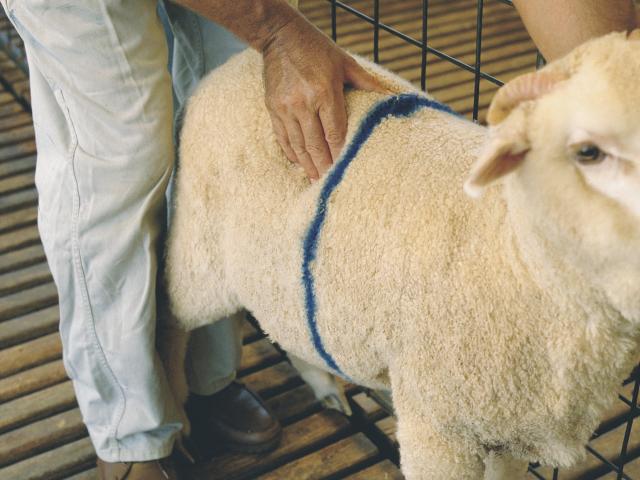
Sheep producers are being urged to monitor the condition score of their sheep and review supplementary feed needs in line with seasonal conditions.
Condition scoring, by handling sheep, provides a good estimation of the nutritional wellbeing of the sheep by assessing the muscle and fat covering its backbone.
It is important to ensure individual sheep within the flock are above condition score 2.
There will be animals that vary within the flock so it is best to aim for an average condition score of 2.5 to ensure the ewes remain productive at mating.
Many producers in areas that have received below average rainfall are supplementary feeding sheep, as the animals’ energy intake from pastures is limited and the amount of food on offer continues to decline.
Weaning 10 to 12 weeks after the start of lambing would reduce the nutritional demand on the ewes and allowed both the ewe and the lamb to be given sufficient feed more efficiently.
Weaned lambs will require sufficient energy to grow at 50 grams per day or 1.5 kilograms per month but the supplement needs to be at least 12 per cent crude protein to ensure high survival rates.
Producers should be continually reviewing their feed budget as the season progresses to determine the amount of supplementary feeding required.
It is more cost effective to maintain the condition score of sheep at 2.5 than to lose it and try to regain it again before the next summer.
Producers should also consider future stocking rates and opportunities to capitalise on solid market conditions, should dry conditions prevail.
More information can be found on our website:
- How to condition score sheep – video
- Supplementary feeding calculator for pregnant and lactating ewes
- Season 2017 webpage - which harnesses a range of livestock, agronomic and financial and wellbeing information.
For more information contact Dr Danny Roberts, Veterinary Officer, Albany on +61 (0)8 9892 8535.
Best practice lamb marking
At lamb marking, using best practice guidelines, particularly when it comes to tail length, will have the best outcome for the lamb.
Lambs should be marked before they are 12 weeks of age, with the youngest lamb being at least 24 hours old so a maternal bond can be established.
Producers are urged to tail dock their lambs at the third joint (or to the tip of the vulva in ewes and to the same length in wethers).
Docking at the third joint will reduce the risk of flystrike and other health problems such as rectal prolapses and cancer in ewes.
The department recommends producers use rubber rings or a hot gas knife when tail docking.
The hot knife method is preferable for tail docking on lambs that are mulesed.
Mulesing may not be necessary on some properties that are in a low risk area, and on properties where producers actively select and breed for fly and worm resistance.
Animals that are sold for slaughter prior to the high flystrike risk period may not need to be mulesed.
The department recommends the use of pain relief for mulesing, tail docking and castration where appropriate.
There are now three registered pain relief options that producers can use at lamb marking.
The Australian Pest and Veterinary Medicine Association (APVMA) have registered the below products for pain relief at lamb marking:
| Product | Description & use | Veterinary prescription needed | Meat withholding period (WHP) (days) | Export Slaughter Intervals (ESI) (days) |
| Tri-Solfen® | Pain relief following mulesing, tail docking and castration. Post-operative gel spray providing local anaesthetic and antiseptic | No | 90 | 90 |
| Buccalgesic ® | Alleviation of pain and inflammation for castration and tail docking. Pre-operative liquid administered orally. | Yes | 10 | 10 |
| Metacam 20®* | Alleviation of pain and inflammation. Pre-operative subcutaneous injection. | Yes | 11 | 11 |
*Lambs must be older than 14 days.
Tri-Solfen® cannot be used when using rings to castrate and tail dock.
Buccalgesic® and Metacam 20® can be used for both ring and knife methods but require a veterinary prescription.
Please note that Tri-Solfen can now be purchased over-the-counter without the need for a veterinary prescription.
It is essential that producers follow all label directions when using pain relief products, and off-label use is not permitted without veterinarian approval.
For more information, please visit the APVMA website.
Lambs should also be vaccinated with a 3-in-1 or 6-in-1 vaccine.
Vaccinating against scabby mouth is recommended, especially if they are likely to be sold into a live export market or finished in a feedlot.
Visit our Best practice lamb marking page for further information.
For more information contact Julia Smith, Development Officer, Albany on +61 (0)8 9892 8450.
Lifetime Ewe Management course
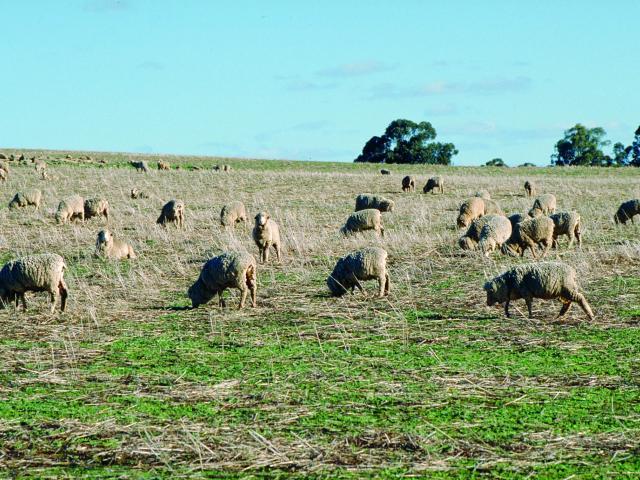
Lifetime Ewe Management (LTEM) is a best practice ewe management program aimed at increasing on-farm productivity and profitability by focusing on condition scoring ewes, assessing pasture and feed budgeting.
Benefits from participating in LTEM come via two avenues:
- increased efficiency due to improved understanding of the pasture-animal system
- meeting targets for the condition score profile of the ewe flock.
In favourable seasons, when there is adequate supply of green pastures at lambing, providing sufficient feed to the pregnant/lactating ewe is made easier.
However, in poorer seasons, or when we experience a late break, determining how much feed is needed to maintain those ewes in good condition is more of a challenge.
By getting involved in a LTEM training program you will better understand the influence ewe nutrition has on the performance of the ewe and her offspring.
You will be able to make more informed decisions about your ewe management to optimise stocking rates and manage risks to avoid 'disasters'.
The course shows you the difference between what you are doing and what you should be doing.
It makes you aware of the implications of not responding to changes in seasonal conditions and gives you confidence and knowledge that what you are doing is right.
Course outline
Lifetime Ewe Management is a nationally accredited course involving groups of 5-6 producers and six 'hands-on' sessions over a period of 12-18 months.
Training under the LTEM program equips participants with best practice management principles for ewe management to increase on-farm productivity and profitability.
The timing of each meeting is linked to critical stages in the management of the ewe’s reproductive cycle.
All sessions involve a visit to each participant’s farm and focus on condition scoring, pasture assessing and feed budgeting activities that are practical and applicable to the farm business.
Each producer monitors a mob of their own ewes to demonstrate the effects of nutrition and management in their environment.
Key topics covered in the course:
- the principles and practices of LTEM
- weaning and preparing ewes for next year's joining
- linking ewe condition at joining with lambing potential
- pregnancy management and the impacts of ewe nutrition
- looking forward and planning for lambing — optimising lamb survival and future productivity
- potential reproductive rate and the impacts of ewe nutrition in late pregnancy
- setting up for joining in the second season — manipulating ewe condition and preparing rams
- economic analysis of different feeding strategies.
What are the steps to getting started?
- Get your group together, minimum of five participants, preferably close by and good friends.
- Contact your preferred trainer.
- Your trainer will forward your groups details to Rural Industries Skill Training (RIST) located in Hamilton, Victoria.
- RIST will be in contact with you via email and provide a link for online registration and pre-course survey for you to complete. You will need to supply your AWI growers number to be eligible for the subsidy.
- Once all participants have registered your trainer will contact you to set a commencement date. All participants must attend session 1 to undertake the course.
The LTEM workshop provides a pathway for you to develop a successful and productive animal production system.
For more information contact Mandy Curnow, Senior Development Officer, Albany on +61 (0)8 9892 8422 or Melanie Dowling, Development Officer, Katanning on +61 (0)8 9821 3248.
Grants to build food exports to Asia

Eight Western Australian agrifood exporters have been awarded funding of up to $200 000 as part of round two of the Grants for Asian Market Export program to boost export opportunities for WA’s agrifood products in Asian markets.
More than $1.5 million has been allocated through the Department of Primary Industries and Regional Development’s Asian Market Success (AMS) project, supported by Royalties for Regions.
The grants program supports WA agrifood business exporters of premium products, with a strong consumer focus and capable of meeting market demand, to develop export relationships with international partners and pursue those market opportunities.
The export grants directly support the repositioning of agrifood businesses for international competitiveness.
Successful grant awardees are from across the state and throughout a number of agrifood industries including horticulture, beef, lamb, grain, seafood, dairy and processed food. Specific to the south of the state include:
Fresh Produce Alliance Pty Ltd - $200 000 to develop and commercialise a nutritious, ready-to-eat product range for the aged-care market in Asia.
Tosum Pty Ltd - $200 000 to upgrade facilities that will enable Tosum to guarantee premium quality and sweetness of fruit for year-round supply to high-end export customers.
Harvey Industries Group Pty Ltd - $200 000 will leverage Harvey Beef's brand created by its retail beef range, to develop a WA-branded lamb finished product for high-end Asian markets.
Avena Mills Pty Ltd - $173 822 to transform Avena Mills from a hulled oats and bird seed processor into a rolled-oats processor and exporter into premium Asian markets.
Future Fields Pty Ltd (Bannister Downs Dairy) - $200 000 to develop a real-time, web-based quality assurance platform to increase customer confidence and ensure Bannister Downs Dairy products meet stringent export standards of premium Asian markets.
Ocean Grown Abalone Pty Ltd - $200 000 to diversify Ocean Grown Abalone's product offering by implementing live export and processing technology, and market development activities in premium Asian markets.
These projects showed the businesses’ ability to expand and sustain export growth; pave the way for new Western Australian opportunities in premium Asian markets; and have considerable positive impact on regional communities and the wider economy.
For further information about the Asian Market Success project, please visit the Asian Market Success webpage.
Understanding slug and snail movements
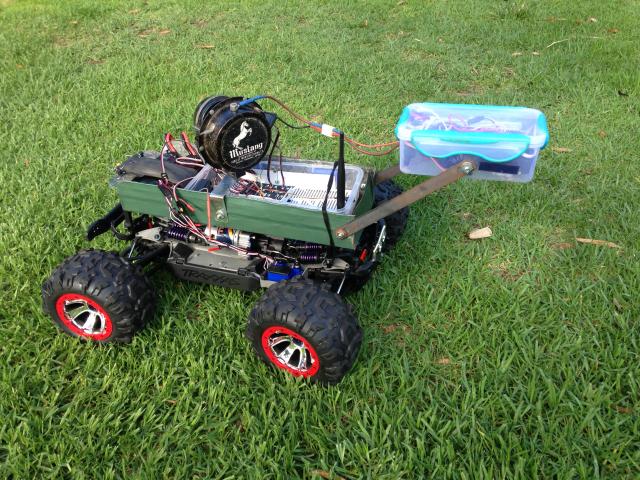
The night antics of snails and slugs have been exposed as part of a research project to improve control measures for the pests, which cost Western Australian grain growers more than $4 million a year.
The Department of Primary Industries and Regional Development (DPIRD) is looking at ways to map the distribution of slugs and snails in paddocks during the season and also to see if slugs and snails stay in the same areas over time.
This research is part of the Boosting Grains Research and Development Flagship supported by Royalties for Regions.
Time lapse cameras have shown snails and slugs do not stop moving or eating even if it hasn’t rained.
They are active at night between 10pm and 4am, which is when most crop damage occurs.
Snails were also active over summer, actively feeding and moving after 10pm.
This means slugs and snails need to be mapped at night to get a good idea of where they are.
The project has developed a rover that automatically takes stepped photographs in the paddock.
Slugs and snails can be visually detected from the photographs and their distribution can be mapped.
The project is working on automating the mapping.
The rover is programmed to travel set transects of the paddock at night during a specified period.
At the end, a map of slug and snail density will direct bait application rates.
The project continue tracking the movement of new populations and how numbers change over time.
Baiting slugs and snails
All pest slugs and snails have been introduced to Australia and it can take years for these pests to build up to high enough numbers to be damaging.
Snails are easily introduced onto farms and have been found on machinery, pot plants and pallets which have all been delivered to farms.
Good biosecurity can stop the spread of snails.
Slugs tend to move within paddocks and by their own steam into the paddock next door.
They are limited to areas where there is sufficient soil moisture to survive a hot, dry summer.
Once established controlling the population of these pests, rather than eradication, is the only option.
Right now, if snails and slugs are causing damage to crops the only option is to bait.
The most effective baiting strategies use a high number of baits per square meter and even coverage.
Grains Research and Development Corporation (GRDC) supported trials have shown it does not matter which bait you use, though rainfast baits last longer than non-rainfast baits in the field.
Baits will compete with the crop to be ‘attractive’ to snails and slugs at this time of year.
If crops are out-growing damage, consider not baiting.
If baiting is needed, better calibration of bait spreaders will optimise results, saving you time and money.
Spreaders that are not calibrated correctly result in an uneven distribution of baits.
The more even the bait distribution the more likely snails will come into contact with bait.
If snails and slugs are not found in high numbers and not causing crop damage, their numbers can build up over this season and pose a threat to germinating crops in the following year.
If you are finding slugs or snails and they’re not an issue consider control options at the end of the year, as next year there could be crop damage.
Visit the Identification and control of pest slugs and snails for broadacre crops in Western Australia webpage for further information.
For more information contact Svetlana Micic, Research Officer, Albany on +61 (0)8 9892 8591.
Take your PIC…and renew on time
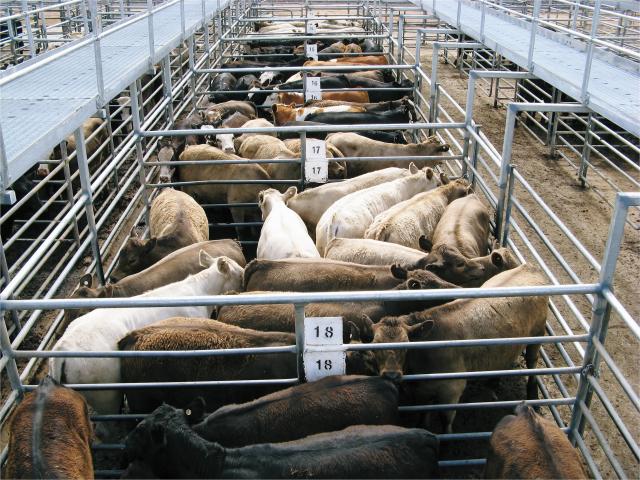
Livestock producers are reminded to make sure their stock brand and property identification code (PIC) registration is up to date to avoid delays at saleyards and processors.
Department of Primary Industries and Regional Development (DPIRD) Registrar of Stock and Apiaries reminds producers to renew their brand on time to avoid being automatically deregistered.
Without registration producers are unable to sell or move stock legally.
Recently, several consignments of stock have been delivered to saleyards and abattoirs where the brand and PIC had expired.
These stock cannot be moved or sold until the brand is renewed, creating considerable delay and inconvenience for both the owner and the saleyard or processor.
The DPIRD Brands office currently mails renewal notices to all registered producers five weeks before the registration expiry date.
From 1 July, producers will be given eight weeks notification.
In 2016, the Brands office processed 6808 registration documents, including new registrations, re-registrations, transfers, cancellations and property detail amendments.
An additional 6433 renewal notices were issued.
Almost half of these renewals had to be issued a second notice as registered owners failed to pay the renewal fee before the PIC expiry date.
This equates to 50% of the year’s PIC renewals with a potential ‘urgent’ need for processing.
This creates processing bottlenecks and subsequent problems with consignments from expired PICs arriving at the saleyard or processor.
To ensure they receive their renewal notice, PIC owners are reminded to update their postal details within seven days of any change of address as is required by the legislation.
Re-registrations can be returned by post or email.
Every PIC is published on the National PIC Register and is used by the Livestock Production Assurance (LPA) program to accredit producers to use the commercially required suite of National Vendor Declarations (NVDs).
If a producer hasn’t paid their livestock owner registration renewal fee on time, their PIC will be deregistered, with both the department and LPA.
This means they can’t use an NVD and the PIC won’t be recognised by saleyard and abattoir operators.
Upon renewal, the producer is required to contact LPA and request their PIC be reinstated on the accredited list.
The LPA NVD waybill is an industry-driven initiative to assure Australia’s domestic and export markets of the safety of Australian beef, lamb and goat meat.
PIC owners are urged to be patient as the re-registration process is not instantaneous.
To check the expiry date of a PIC or update details, producers can enter the code in the Brands - Property identification code enquiry page.
Adding or removing a property to a registration at any time is free of charge.
To check LPA accreditation contact 1800 683 111 or go to Livestock Production Assurance to plug in your PIC.
Other useful pages on the department website include:
- Livestock ownership, identification and movement in Western Australia
- Registering as an owner of stock or as a beekeeper
For more information contact Beth Green, NLIS Operations Manager, Bunbury on +61 (0)8 9753 0302.
Ensure livestock are fit for the journey
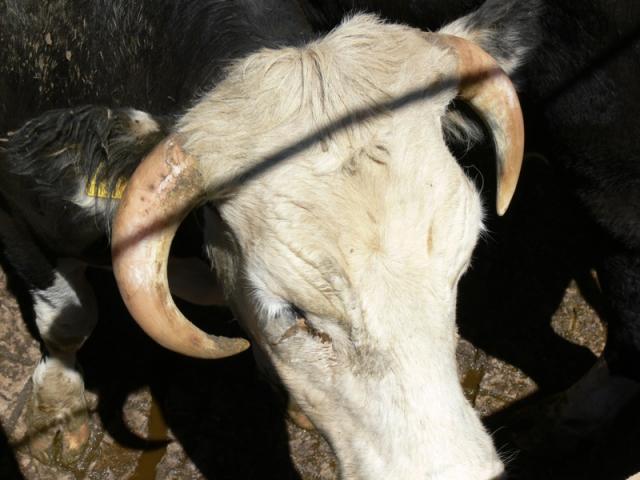
The Department of Primary Industries and Regional Development (DPIRD) is cautioning livestock agents, buyers and producers to ensure livestock being prepared for transport are fit to load.
Inspectors of the DPIRD Livestock Compliance Unit have recently dealt with incidents involving the transport of heavily pregnant animals, and an increase in the number of cattle and sheep arriving at saleyards with ingrown horns.
In these instances livestock are not fit to load.
Transporting animals in the late stages of pregnancy or recently born animals, where there is a risk of harm to the animal, is an offence under the Animal Welfare Act 2002.
Not knowing the animal was pregnant is not a defence. Agents, buyers and producers should be aware of the risk, and check each animal prior to transport.
Animals presented with an ingrown horn should also not be transported until they have had the horn trimmed and have recovered from any injuries as transporting animals in this condition could cause further suffering.
Ultimately, if there is any doubt about the condition of animals, they should not be accepted for transport.
Department inspectors have noticed an increased prevalence of ingrown horns during inspections at saleyards and abattoirs over the past few months.
Trimming the horns of cattle and sheep should be standard practice, particularly in animals where there is a risk of the horn becoming ingrown.
Trimming is a straight-forward procedure.
If left untreated, the horns could eventually penetrate the animal’s skull.
If the horn has penetrated the skull, it should be trimmed in accordance with the advice of a veterinarian, or the animal should be humanely euthanised.
Failing to trim the horn is a possible offence under the Animal Welfare Act 2002 and carries significant penalties.
Animal welfare codes of practice in WA have been prepared to assist producers to make decisions on issues such as transporting pregnant livestock, and how to trim horns without cutting into sensitive horn tissue.
The Model Code of Practice for the Welfare of Animals: Cattle and the Code of Practice for Sheep in Western Australia can be downloaded from our website.
The department is committed to providing leadership and improving animal welfare outcomes in WA.
The department administers the Animal Welfare Act, and ongoing monitoring and raising awareness of animal welfare legislation and standards is critical to achieving improved compliance with the Act.
Inspectors of the Livestock Compliance Unit play a vital role. At saleyards and other places where animals are brought together, inspectors carry out inspections and liaise with industry to educate and advise on animal welfare.
Inspectors can issue Direction Notices to keep any livestock unfit for transport at the saleyard for a specified period, which may mean agistment fees for the owner.
Inspectors may also initiate prosecutions for non-compliance.
Additional information about Animal Welfare is available on our website.
For more information contact Jodie Gysen, Client Engagement Leader, South Perth on +61 (0)8 9368 3194.
AgMemo set to change
AgMemo is evolving to an industry focussed state-wide publication that provides essential, timely and relevant information to assist you in managing and developing your business.
AgMemo has regularly delivered bi-monthly editions specific to five agricultural regions throughout Western Australia (Southern, South West, Central, Northern and Rangelands).
In a bid to improve the way we deliver messages to subscribers we will be changing the focus from region to industry.
The main body of the newsletter will promote our department’s achievements and projects and provide timely messages that are relevant to the majority of subscribers.
Readers can then select their relevant industry (grains, livestock or horticulture) for targeted articles providing a mix of timely strategic and tactical information, issues and news.
Another exciting new feature will be a regular section listing upcoming industry funding, scholarships and events.
The newsletter will continue to be published every two months as an e-newsletter sent directly to your inbox.
The next edition you receive will be published in the new format.
The AgMemo team welcome feedback and ideas from subscribers highlighting current issues and topics that they would like to see published in the newsletter.

